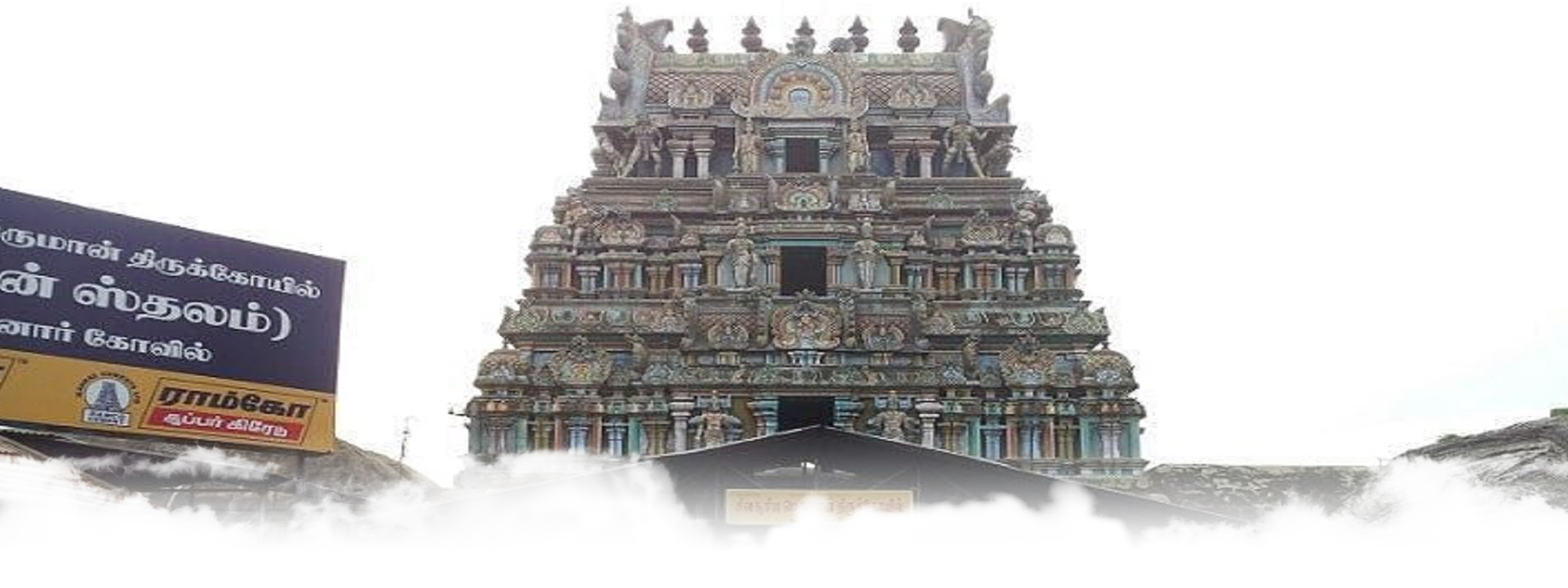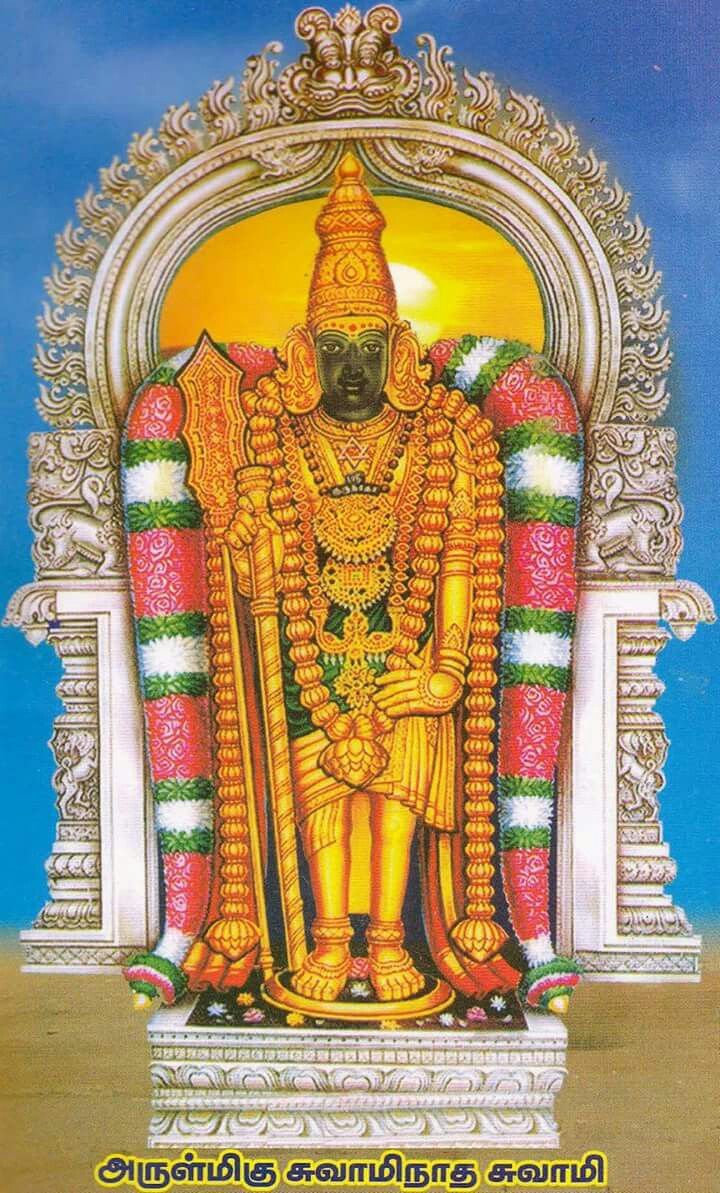
The Swamimalai Swaminathaswamy Temple
Located 5 km from Kumbakonam, on the banks of a tributary of river Kaveri in Swamimalai, which is about two hundred fifty kilometers away from Chennai. Throughout the year and hundreds of thousands of devotees flock at the temple in South India to seek the blessings as well as gain spiritually in the presence of Lord Murugan.
As Hindu legend says, Muruga, The son of Lord Shiva, expounded the true meaning of the religious mantra (om) at this place and hence received the name Swaminathaswamy. The existence of the temple is believed to be millennia old dating back to 2nd century BC, which was later on rebuilt by a Chola King.
A Milenia old history
As per the legend, Brahma, the Hindu god of creation, caught Muruga on the wrong side when he disrespected him at the time of his visit to Mount Kailash, where Shiva and Parvati receded. Brahma decided to confront Muruga as he was highly skeptical of the ways used by Muruga to craft living beings said that he was creating living creatures. This angered Muruga, to which he asked Brahma about the ways he used. As Brahma replied, “Veda”, He was asked by Murga to recite it. Brahma began doing that with the help of a holy word called Pranav Mantra, “Om”. To Brahma’s Utter surprise, Muruga asked him what did Om mean. Such a question left Brahma bewildered as he clearly didn’t expect such a show of intellect from a child, and he couldn’t reply. With his clenched fists, Muruga knocked out and punished him with imprisonment. Muruga stood up to the role of the creator himself. This caused chaos and panic among the celestial deities as they could feel the absence of Brahma and approached Shiva for their concern.
Ultimately Muruga was asked by Shiva to release Brahma to which he denied stating Brahma didn’t know the meaning of the Pranav Mantra “OM.” When Shiva asked Muruga to explain the meaning himself, the Knowledge bombs that Muruga dropped even made the Shiva listen with rapt attention like that of a student. Muruga was named “Swaminatha Swami”. The meaning of this name is “The Teacher of Shiva. Following the legend, the shrine of Muruga was laid atop the hills of Swamimalai and Shiva in the basement.
The temple of Swamimalai is an ancient has withstood the sand of time since the time it was built around second BC. The years of raging wars to come left the temple damaged to a great extent.
According to legend, Brahma was imprisoned by Lord Murugan as he failed to present an answer to Muruga’s question, the meaning of Pranava mantra.
As the celestial deities felt his absence, Without Lord Brahma, the lives stood still. All devas requested Lord Shiva to save Lord Brahma, thus saving lives. When Murugan was asked by Lord Shiva to release Brahma, he refused that it was punishment for his ignorance. Shiva sat in the shoes of a student as Murugan took his place as the creator and explained the meaning. Lord Shiva listened to Lord Murugan with full enthusiasm bending his head down with folded arms and learned the mantra.
Another legend says The Brahmarishi curse caused Lord Shiva to lose all his knowledge.
Lord Murugan then presented himself as the guru who taught the substance of mantra to his father.

The Breath Taking Architecture
Situated at the top of the artificial hill, which is generally called as “kattu malai” in the Tamil dialect. The structure of the Swamimalai temple is a scene to look at. Sixty significant steps lead the 60 feet structure all the way to the bottom. The shrine of Lord Sundaresar and Devi Meenakshi is in the basement of the hill while that of Murugan lies atop the sixty feet hillock. The beautiful sculptures which represent the legendary story of the temple are seen here.
The temple has three gateway towers known as ‘Gopurams’ with three ‘Praharams.’ The ‘Gopuram’ on the south side of the temple is decorated with statues and contains five levels while the other two entrances are devoid of any towers.
The first of the Praharams is at the base of the hill, the second is halfway up the mountain and the third at the top surrounding the sanctum. Upon passing the ‘Raja Gopuram’ and the ‘KalyanaMandapam,’ you reach the shrine dedicated to Goddess Sakti at the base. In addition to this, there are other shrines for various other deities and the well with ‘vajra Teertha.’
Steps lead from here upwards towards the top of the hill. When you reach halfway up the mountain, there is a small area where beautiful statues depicting the legend associated with this temple have been created. Further above is the second Praharam. You climb further to reach the level where the shrine for Lord Swaminathan is built. There are various shrines to other deities on the first Praharam.
There is a golden armor as well as crowns and a diamond lance for Lord Murugan. A shrine of Vinayagar lies outside the first precinct. The central shrine houses the granite image like idol ofSwaminathaswamy. Dakshinamurthy, Durga, Chandikeswarar are others along with Swaminathaswamy whose celebrated images lie in the first precinct. The images of Shiva and Parvathi are located downhill. The second precinct, which is the largest one of the temple, is also home to the marriage hall and the Golden Chariot. The temple is one of the most visited temples in the district. The white elephant, which is considered a powerful, terror striking animal, is the original mount of Lord Muruga, according to the Hindu Folklore, compared to the peacock, which is considered to be his universal mount.
Religious Significance
Swamimalai is one of the six main abodes of Muruga, that mark the different phases of his life. According to Hindu belief, Swamimalai is where Muruga preached the "Pranava mantra" to his father, Shiva, at a young age. The cult of Murugan is of immense pride to the Indian Tamils, who identify six with Murugan connecting the six directions to the six chakras in human anatomy.
As per the Hindu legend, Mahalingaswamy at Thiruvidaimarudur is the center of all Shiva temples in the region, and the Saptha Vigraha Idols(The seven prime consorts) are located at seven cardinal points around the temple, in various parts of the state. The seven deities are Nataraja in Chidambaram Nataraja Temple at Chidambaram, Chandikeswarar temple at Tirucheingalur, Vinayagar in Vellai Vinayagar Temple at Thiruvalanchuzhi, Muruga in Swamimalai Murugan Temple at Swamimalai, Bhairava in Sattainathar Temple at Sirkali, Navagraha in Sooriyanar Temple at Suryanar Kovil and Dakshinamoorthy in Apatsahayesvarar Temple, Alangudi at Alangudi, Papanasam taluk.
Arunagirinathar, a 15th-century Tamil poet born in Tiruvannamalai, spent his early years as a rioter and seducing women. After ruining his health and finding no purpose of the wealth he accumulated, he tried to commit suicide by jumping from the northern tower of Annamalaiyar Temple, but he survived. It was nothing short of a miracle and cited Lord Murugan’s grace behind it. He became a staunch devotee of Murugan and composed Tamil hymns and poems glorifying him. Arunagirinathar visited various Murugan temples singing praises of the deity and, on his way back to Tiruvannamalai, visited Swamimalai.
The Mystical Siddha
Saint Bhurugu
Interesting Facts
- “Thiruveragam” or "Swamimalai" is one of the most visited temples in Kumbakonam of Tamailnadu. The temple ranks 4th among the six abodes (Arupadaiveedu)of Lord Murugan in terms of visitors.
- Unlike other Murugan temples, where a peacock is sported axial to the image of the presiding deity, Here, an elephant is seen in front of Murugan instead.
- Arunagirinathar, the great poet of the 15th century, when visited this temple, wrote many hymns praising Murugan and the beauty of Swamimalai, which is known as "Tiruppukazh."
- The Great Tamil poet Nakeerar wrote "Tirumurukatrupadai" in this temple.
- The main shrine of Murugan is adorned with a diamond Vel every Thursday.
- The list of festivals in this temple is highly decorated. They are Brahma Utsavam, Murugan Valli( The Marriage Festival), Vaikasi Visagam, Sashti, which attract hundreds of thousands of devotees from all over the world.
- Murugan’s imposing Golden Chariot, which lies within the temple is made up of seven kilos of Gold, eighty kilos of silver along with many other metals like copper, which is beautifully illuminated by light bulbs and earthen lamps.

